Sandstone Quarrying for Building Construction
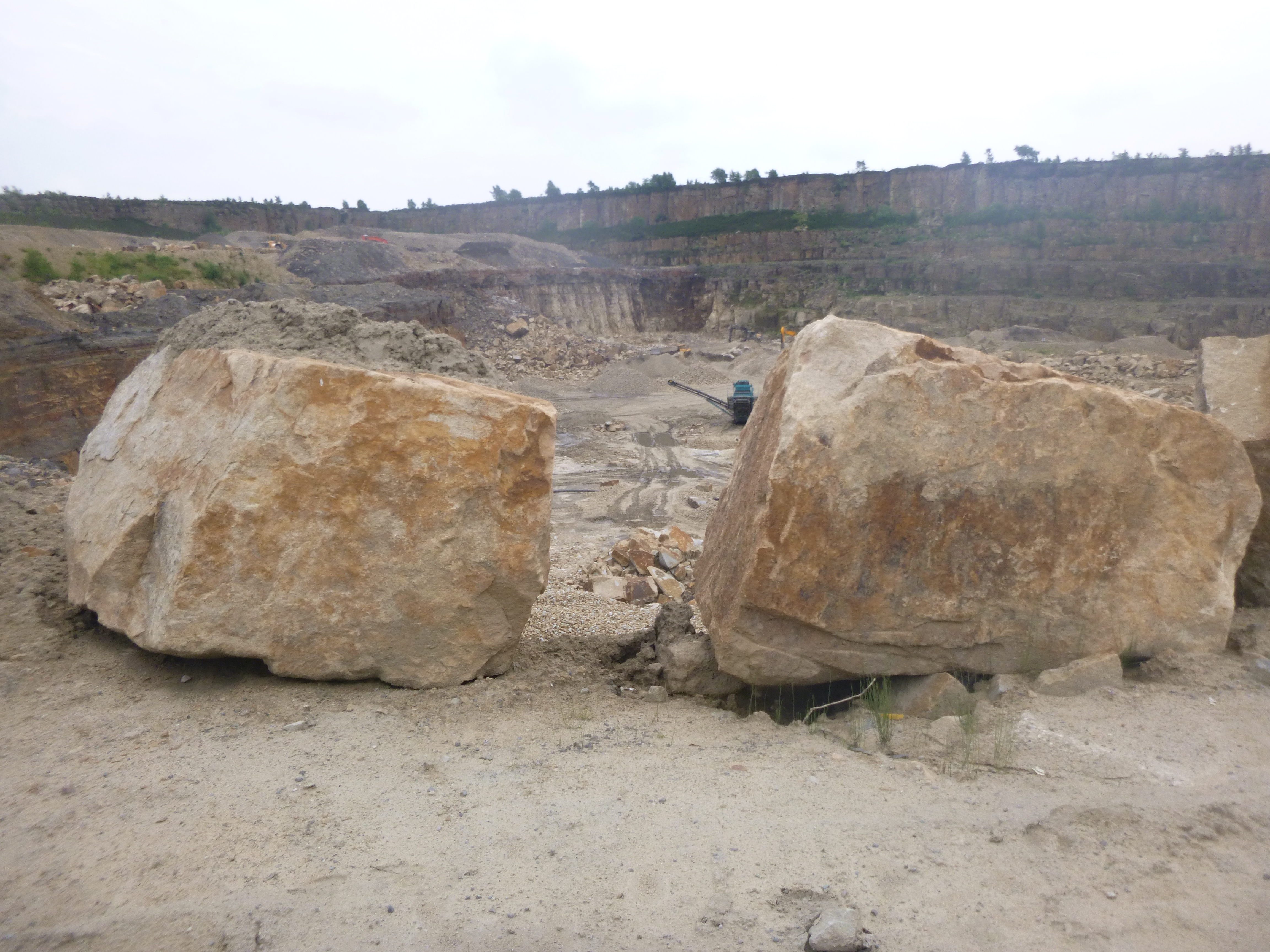
At Armstrongs, we specialise in the extraction and supply of high-quality sandstone, a versatile and durable material that has stood the test of time in the construction industry.
Our sandstone quarries in the North West of England, such as Brinscall, Montcliffe, and Waddington Fell, are renowned for producing sandstone that meets the unique demands of various construction projects, from grand architectural facades to intricate stonework.
This guide will explore what makes sandstone an exceptional building material, how we quarry and process it, and the benefits it brings to construction projects.
What is Sandstone?
Sandstone is a sedimentary rock formed over millions of years from compacted layers of sand, primarily composed of mineral grains like quartz and feldspar.
This natural composition results in a highly durable material that resists weathering and retains its integrity even under challenging conditions. Sandstone is also celebrated for its versatility in colour and texture, ranging from soft yellows and reds to rich, earthy browns.
The texture of sandstone is both fine and grainy, which lends a natural aesthetic appeal to building projects.
The durability and weather resistance of sandstone make it an excellent choice for various architectural applications. Unlike many other building materials, sandstone maintains its appearance over time, withstanding harsh climates while requiring minimal maintenance.
This combination of strength and visual appeal is why sandstone remains a preferred choice for construction and architectural stonework.
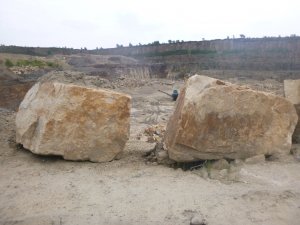
Sandstone as a Building Material
Sandstone has been a popular choice in building construction for centuries, prized for its strength, natural beauty, and availability. From historical landmarks to modern buildings, sandstone has been used in countless structures that continue to showcase its lasting appeal.
It is especially valued for its aesthetic qualities, as its natural grain and warm hues enhance architectural designs, creating a timeless look that suits both traditional and contemporary styles.
In construction, sandstone is highly versatile and is used for both structural and decorative purposes.
Its load-bearing capabilities make it suitable for use in building walls, columns, and facades, while its workability allows it to be carved and shaped into architectural features like window sills, lintels, and door surrounds.
At Armstrongs, we source sandstone from our multiple quarries across the North West, where the stone is of such high quality that it has been sourced specifically to be used as part of the prestigious Sagrada Familia renovation project in Barcelona.
What is a Sandstone Quarry?
A sandstone quarry is a designated site where natural sandstone deposits are extracted from the earth for use in construction, landscaping, and architectural projects.
Quarries are vital for sourcing high-quality building materials like sandstone, ensuring that this durable, aesthetic stone is readily available for various applications. At Armstrongs, we operate several notable sandstone quarries, including Brinscall, Montcliffe, and Waddington Fell, where we extract premium sandstone for both structural and decorative uses.
Each quarry site has its own unique characteristics and qualities of stone, meeting the diverse demands of the construction industry.
How Do Sandstone Quarries Work?
The process of quarrying sandstone involves several stages, from initial extraction to transportation.
First, we carefully survey the site to determine the quality and volume of sandstone deposits, ensuring efficient and sustainable extraction.
Quarrying begins with precise drilling and, in some cases, controlled blasting to separate large blocks of sandstone from the quarry face. Once separated, these blocks are either transported as they are or processed further on-site.
At Armstrongs, we employ both traditional and modern quarrying techniques. For example, our blasting methods are carefully managed to maintain the structural integrity of the stone.
Following extraction, sandstone blocks may go through additional processes, including crushing and screening, to produce specific grades and sizes of aggregate.
This versatility allows us to provide everything from large, dimensional stone blocks to finely crushed sandstone aggregate, each tailored to meet the needs of diverse construction projects.
The Quarrying Process at Armstrongs
Extraction Techniques for Sandstone
Sandstone extraction requires a blend of precision, planning, and expertise to ensure the highest quality of quarried stone.
At Armstrongs, we begin with drilling to create access points and controlled blasting, carefully planned to produce usable blocks without compromising the stone’s natural structure.
The process is highly regulated, with experienced professionals overseeing each stage to ensure safety and quality.
Our quarries at Brinscall, Montcliffe, and Waddington Fell are each equipped to handle the unique extraction requirements of the specific sandstone deposits found at each location, providing high-quality sandstone for both building and infrastructure.
Crushing and Screening Sandstone
After the initial extraction, the sandstone often undergoes crushing and screening to create various sizes of aggregate suitable for construction projects.
The crushing process breaks down larger blocks into smaller, more manageable pieces, while screening separates the crushed stone into specific sizes.
Armstrongs follows a meticulous process, carefully controlling the size and quality of the crushed sandstone to meet industry standards.
Our crushed sandstone products, used as base materials, aggregates, and decorative stones, are tailored for versatility in construction, providing excellent options for foundations, pathways, and landscaping.
Cutting and Finishing Sandstone for Building
Once extracted, sandstone intended for structural or decorative use is carefully cut and finished. At Armstrongs, we have invested in both fixed blade and wire saws, which allow our skilled stonemasons to cut sandstone into precise shapes and dimensions.
This precision is essential for creating high-quality products like windowsills, lintels, and custom architectural pieces.
Our cutting and finishing processes are highly flexible, enabling us to meet the bespoke requirements of our clients, whether for a residential development or a landmark project like the Sagrada Familia.
By ensuring that each stone is cut to exact specifications, we help our customers achieve a seamless and professional finish in every application.
Applications of Sandstone in Building Construction
Structural Uses of Sandstone
Sandstone is highly valued in structural construction due to its strength and durability. It is often used in walls, columns, and load-bearing structures, where its natural resilience supports significant weight and withstands the test of time.
At Armstrongs, we are proud to see our sandstone from Brinscall Quarry used in prominent projects such as the Sagrada Familia in Barcelona.
This monumental structure showcases how sandstone can be both a reliable building material and a beautiful, enduring component of architectural heritage.
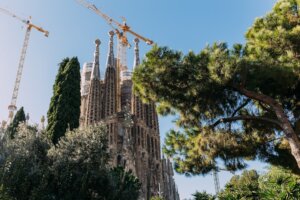
Decorative and Architectural Uses of Sandstone
In addition to its structural uses, sandstone is prized for its aesthetic qualities, making it a popular choice for decorative architectural elements. Sandstone’s natural hues and textures lend themselves beautifully to features like fireplaces, lintels, window surrounds, and facades.
Armstrongs’ sandstone, sourced from Brinscall and Waddington Fell quarries, adds a unique character to properties through bespoke cut stone tailored to the specific needs of each project.
Our custom-cut sandstone pieces bring elegance and natural beauty to both contemporary and traditional architectural designs.
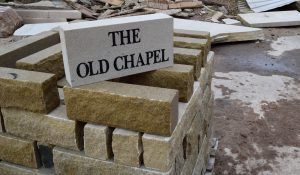
Crushed Sandstone in Infrastructure and Landscaping
Crushed sandstone serves as an essential aggregate material in infrastructure and landscaping. Its applications are varied, from being used as a base material for roads, driveways, and pathways to acting as a foundational layer in construction projects.
The crushed sandstone we produce is also ideal for landscaping, offering a natural, durable base for garden paths, drainage solutions, and ground cover in civil engineering.
Armstrongs’ crushed sandstone is versatile, sustainable, and perfectly suited to projects needing resilient yet aesthetically pleasing materials.
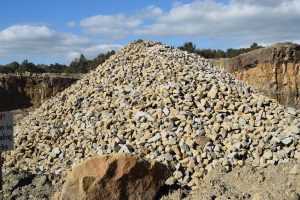
Benefits of Sandstone as a Building Material
Durability and Weather Resistance
One of the key benefits of sandstone is its natural durability. Resistant to weathering, sandstone holds up well against the elements, making it ideal for long-lasting structures in various climates.
Our sandstone has been selected for projects where durability is paramount, standing firm in both coastal and urban environments. Armstrongs’ sandstone provides the strength necessary for buildings and structures that are built to endure.
Aesthetic Appeal and Versatility
Sandstone’s aesthetic qualities make it a preferred choice in both traditional and modern architecture. With a variety of colours, textures, and grain patterns, sandstone adds visual depth to a project, enhancing its architectural appeal.
This stone blends seamlessly with natural landscapes and urban settings alike, making it an incredibly versatile building material.
Whether used for a rustic facade or a polished modern finish, Armstrongs’ sandstone complements any design, adding warmth and elegance to properties.
Sustainability and Environmental Benefits
Using locally quarried sandstone reduces the environmental impact associated with transportation, supporting sustainable building practices. Sandstone’s natural formation means it requires minimal processing compared to synthetic materials, further reducing its carbon footprint.
At Armstrongs, we are committed to responsible quarrying, taking steps to rehabilitate our quarries and reduce waste through efficient extraction techniques. By choosing quarried sandstone, developers can contribute to eco-friendly building solutions and enjoy a material that’s both beautiful and sustainable.
Armstrongs’ Expertise in Sandstone Quarrying and Supply
Brinscall Quarry – Supplying High-Quality Sandstone
Brinscall Quarry, located near Chorley, has been a trusted source of premium sandstone for over a century. This quarry produces a unique, durable sandstone, valued for both its strength and aesthetic appeal.
Brinscall’s sandstone is not only visually striking but is also incredibly resilient, making it suitable for prestigious architectural projects around the world.
Notably, our sandstone has been selected for the iconic Basilica de la Sagrada Familia in Barcelona, where it complements the structure’s historical and artistic elements.
Our team at Armstrongs is proud to be associated with such internationally recognised projects, showcasing the quality of Brinscall sandstone in global architectural history.
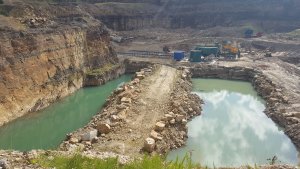
Montcliffe Quarry – Producing Durable Gritstone
Montcliffe Quarry, near Horwich, is renowned for its high-quality gritstone, a type of well-cemented sandstone particularly suited for heavy-duty construction.
Montcliffe’s gritstone is known for its robustness, making it a preferred material for infrastructure projects where resilience is critical. This stone’s strength enables it to withstand high-stress applications, making it ideal for building foundations, road construction, and other projects where a durable base material is essential.
Armstrongs’ commitment to producing reliable, durable gritstone at Montcliffe Quarry ensures our materials are suitable for large-scale projects that require exceptional strength and stability.
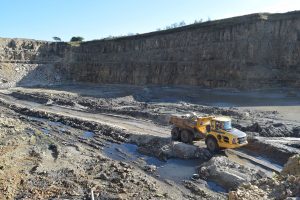
Waddington Fell Quarry – Versatile Sandstone for Building Projects
Waddington Fell Quarry, located near Clitheroe, offers a range of sandstone with varied colours and strengths, making it versatile for numerous architectural applications.
The sandstone from Waddington Fell is popular for its adaptability in building, from creating striking facades to adding character with bespoke architectural details. This quarry’s sandstone is frequently used in custom projects like fireplaces, lintels, and door surrounds, where its natural colour variations and structural integrity bring an elegant finish to properties.
Armstrongs’ ability to supply sandstone in custom cuts allows us to meet the unique specifications of each project, adding both beauty and value.
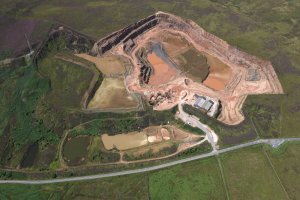
Sandstone Quarrying FAQs
What is sandstone, and why is it used for building?
Sandstone is a sedimentary rock composed mainly of sand-sized minerals, known for its durability, weather resistance, and aesthetic versatility.
Its natural composition and range of colours make it an ideal building material, providing both strength and visual appeal in construction projects.
Sandstone is widely used in architectural elements due to these qualities, making it a valuable choice for various building needs.
How is sandstone extracted in a quarry?
Sandstone extraction involves carefully planned methods, including drilling, blasting, and crushing, to obtain large blocks from the earth.
At Armstrongs, we use a combination of traditional techniques and modern machinery to ensure that the sandstone is efficiently extracted while maintaining its quality.
Once removed, the stone undergoes additional processes like crushing and screening to prepare it for specific applications.
Is sandstone a good material for building?
Yes, sandstone is an excellent building material. It is durable, weather-resistant, and can endure a wide range of environmental conditions.
Its strength and natural beauty make it ideal for both structural and decorative purposes, providing longevity and style in construction projects. Sandstone’s versatility allows it to be used in everything from large buildings to detailed architectural elements.
How do you cut sandstone for building?
Cutting sandstone requires precision tools and techniques to achieve the desired shape and finish. At Armstrongs, we use fixed blade and wire saws to accurately cut sandstone for building applications.
This allows us to shape the stone to precise dimensions, whether for window sills, lintels, or other custom designs, meeting the specific requirements of each project.
What are some examples of sandstone building projects?
Armstrongs’ sandstone has been used in several prestigious projects, including the Basilica de la Sagrada Familia in Barcelona and the historic Midland Hotel in Manchester.
These projects demonstrate sandstone’s versatility as a building material and highlight its use in both structural and decorative applications, showcasing its strength, beauty, and timeless appeal.
What are the environmental considerations of sandstone quarrying?
At Armstrongs, we prioritise sustainable quarrying practices, including responsible extraction, site rehabilitation, and waste reduction.
We work to minimise the environmental impact of our quarrying activities, ensuring that our operations support sustainable construction by using efficient methods and recycling materials where possible.
Our commitment to sustainability ensures that sandstone quarrying remains an environmentally responsible choice.
